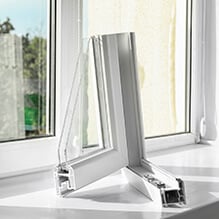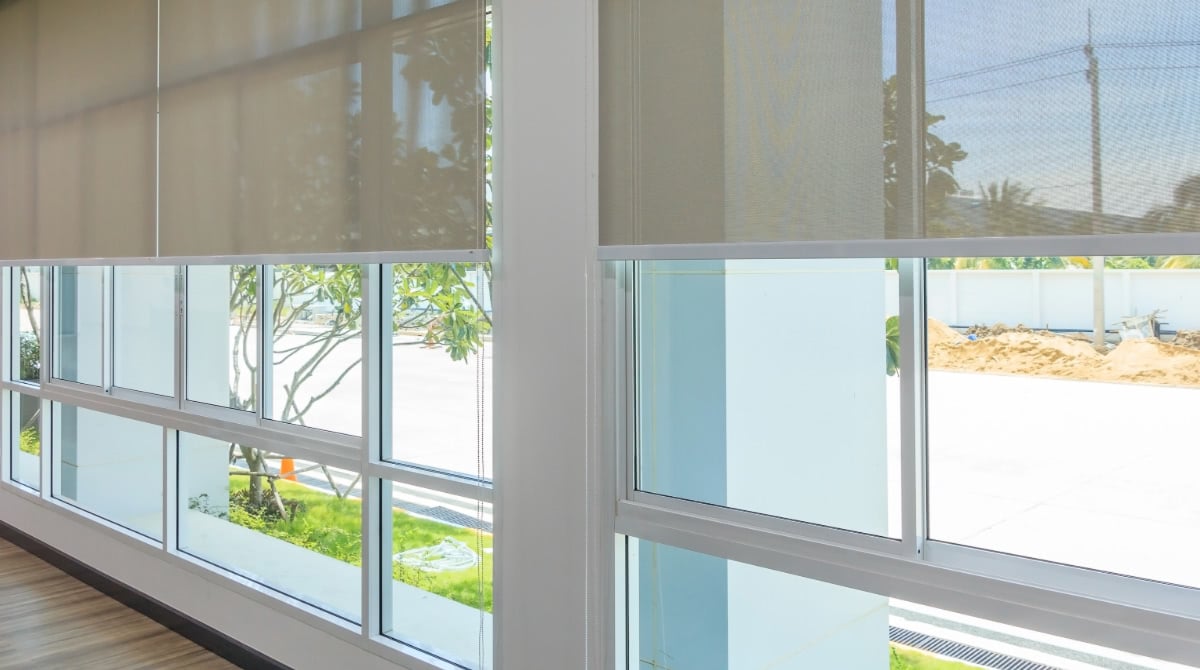Learn how to identify a broken window seal and what your best options are for dealing with it.
There are a lot of home improvement projects that can be a lot of fun to do. Resealing a window is decidedly not one of them. If your home features double pane windows, it will, unfortunately, be something you will have to do at some point. Window seals will wear down over time and eventually need repair or replacement. So how do you know if your window needs repair, and how do you know what to do about it if it does?
What is a double pane window?

A double pane window, also known as a dual pane window or thermopane window, is simply a window with two panes of glass instead of one. If you don’t know what a pane is, it’s just the sheet of glass that fits within the window frame. Double panes have two of these. Singles only have one.
Your home most likely has double pane windows. Single pane windows are out of date, and triple pane, while they do exist, are not often opted for by homeowners. Double pane is pretty much the standard at this point.
Double pane windows insulate your home better than single pane, offsetting the higher initial cost with lower monthly power bills. They can do this for two reasons, the first of which is obvious. There is more material between you and the outside world than there would be with only one pane. The second reason is argon gas, which is inserted between the window panes to assist in insulation.
How can I tell if my double pane window is broken?

The primary indicator of a broken window seal is moisture between the window panes. If your windows are foggy, but nothing happens when you try and wipe away the condensation, the fog is inside the window. That is the immediate and obvious sign that your window seal is broken.
This moisture won’t always cover the whole window in fogginess. Often, you’ll be able to spot the moisture only in the corners in the form of fog or water droplets. Still, though, this means your seal is busted and needs a fix.
Unfortunately, a broken seal does mean the insulating ability of the window is diminished. Outside air is getting inside, and the argon gas that helps insulate is escaping, extending the issues of a broken window seal well beyond its appearance.
What are my options?
Call in the warranty
Most windows come with warranties when they are purchased. Try to buy windows with the longest warranties possible, as it can save you a lot of hassle should you ever need it. If your window is still under warranty, your problem is much smaller. Call in the warranty and have the window replaced. Done and done.
Replace the window entirely
If your window seal goes bad, and the warranty is expired, your first option is to replace the window entirely. This will be the most expensive option, but your brand new fully insulated window will save you money long-term on your power bills. You’ll likely want to be calling in a professional for this particular repair job. A good estimate for a professional window replacement is around $500 if you have a more common vinyl window. Replacing a wood frame window is always more expensive, sometimes costing more than $1000.
Fix the seal
If you don’t want to replace the entire window, there are other options, one of which is having just the seal itself fixed. Keep in mind this won’t bring your window back to full insulating power, as the insulating argon gas between the panes won’t be replaced. However, it will be considerably less expensive than replacing the whole window. Still, the decreased insulation will start to even the cost over time.
Repairing a window seal could mean a few different things depending on where the seal is broken and how much of it is broken, but a fair estimate for the cost of a professional window seal repair is around $100.
Leave the window the way it is
If you find the seal break isn’t significant and is not resulting in material increases of your power bill or the fogging up of the window, you could leave it as-is.
This is not recommended because the seal is only going to deteriorate more if left on its own. If you identify the busted seal but choose to do nothing because it isn’t currently an issue, it will likely become an issue down the road, so you might as well take care of it.
Those of you that live in a more mild climate may find this to be a more appealing option.
Defogging
Defogging is a relatively new technique that is designed to fix the physical appearance of a window with a broken seal. This will do virtually nothing to correct the insulation problems but could be useful as a short-term solution if you need to fix the appearance of your window.
A professional defogging service can conduct this for you. This involves drilling a tiny hole in the window pane and removing all the condensation between both. Next, an anti-fog solution is pumped into the window and the hole is sealed. This will, at least temporarily, restore the appearance of your window. The seal breakage still exists, though, so eventually, the window will fog back up.
Is there a DIY option?
Technically, you can replace a window on your own, but it’s by no means quick and easy. You’ll need a lot of tools and several hours to complete a window reinstallation, and it is generally recommended against doing so yourself unless you have the appropriate skillset. If you’re determined to do it yourself, the first step is examing the frame and deciding what shape it is in. You can use insert windows if your frame is in good shape, which just means a sticking a new window into an old frame. This is considerably easier than what is necessary if you need to replace the frame. Stripping out the entire frame and replacing the whole unit is a serious task that you can also do yourself. Just make sure you know what you are doing.
Topics:




